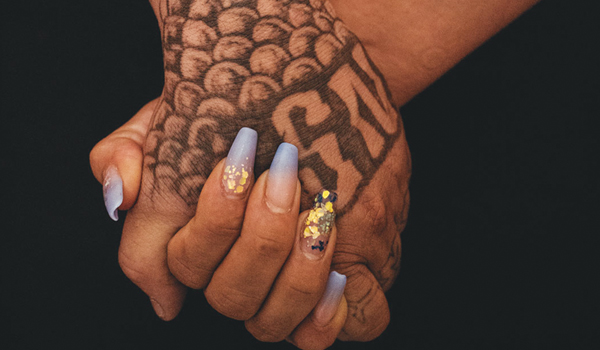Gender dynamics
Genevieve Kotarska examines the importance of gender analysis for understanding organised crime.
A recent RUSI event series sought to examine the gender dynamics of organised crime, going beyond traditional notions of men as perpetrators and women as victims to explore female criminality and male victimisation.
The series revealed the many complex ways in which gender norms influence the world of organised crime and responses to criminality. These dynamics are still under-recognised, but incorporating gender into our understanding of organised crime can improve crime prevention and response.
Research suggests that young men joining criminal groups are often motivated by notions of masculinity relating to honour, respect, wealth, power and ‘getting the girl’, particularly those from poor backgrounds who have limited alternatives for social advancement.
Gangs in London, the Americas and across the globe increasingly use social media to flaunt their luxurious lifestyles, painting criminal success as the accruement of money, luxury items, weapons and women. Access to and sexual relationships with women therefore become a means for young men to gain social credibility with their peers, engendering respect and envy from others.
Yet viewing women as a tool to affirm one’s own masculinity inevitably leads to their dehumanisation and othering, with women viewed only in relation to men – which can then extend to myriad forms of gender violence. Such dehumanisation may also contribute to the economisation of women as a means of generating profit through sexual exploitation and forced prostitution.
Discussion of these gender dynamics takes us into murky waters. It is hard to discuss such manifestations of masculinity without unintentionally removing the agency from women who may freely choose to associate with members of an organised crime group (OCG) – a little understood dynamic, but one likely to be similarly wrapped up in feminised needs for social prestige and security.
In Latin America, several women have held notable leadership roles, with some engaging in extreme violence that goes against gender stereotypes
Similarly, it risks tarring all men with the same brush, obscuring how hegemonic masculinity can also harm men and prevent male victims from speaking out, and overlooking how other manifestations of non-violent masculinity can actually stop young men from joining gangs.
Nevertheless, understanding how toxic forms of masculinity can be used to entice men into criminality may provide some avenues for designing more effective interventions.
Research into this area is relatively new, but innovative programmes – such as a Bogotá helpline set up to provide men with emotional support and psychological guidance to help them unlearn machismo and stop them perpetrating violence – demonstrate how recognising the role played by masculinity may be crucial to preventing and mitigating patterns of criminality and violence.
Gender as a tool of criminality
As well as being a motivating factor for entering a life of crime, gender norms are utilised by gangs to exploit men, women, boys and girls.
For example, gangs may film the sexual abuse of boys and girls and threaten to share the videos should the victims not comply with their demands, coercing them into engaging in criminal activity. Victims may then seek to climb up the OCG hierarchy to regain their agency and a sense of dignity, thereby becoming perpetrators themselves – a phenomenon known as the victim-offender overlap.
The justice system’s need to view people as either a victim or a criminal leaves little space for understanding how trauma and victimisation influence and shape pathways into criminality
This overlap is well recognised. Incarcerated men and women are highly likely to have been a victim of some form of abuse, neglect, violence or criminality at some point in their lives. What is less clear is how the victim-offender overlap differs between men and women.
Women who engage in human trafficking, for example, are often former victims of human trafficking networks who now act as recruiters and managers of other victims, thereby continuing the cycle of victimisation.
The justice system’s need to view people as either a victim or a criminal leaves little space for understanding how trauma and victimisation influence and shape pathways into criminality. Better recognition of these dynamics, trauma-informed policing and improved support for victims may provide an important avenue for preventing cycles of offending.
Women in organised crime
Women under OCGs’ sphere of influence are vulnerable to various forms of victimisation.
In Central America, female relatives of gang members are often targeted for revenge killings, while women and their families are also subject to extreme violence for rejecting the advances of local gang leaders.
Women who choose to join a gang often have to undergo violent initiation rituals, such as in El Salvador where they are subject to either beatings or rape as part of their initiation. After this, women’s bodies and relationships are policed by the gang, removing their sexual autonomy.
Academics, policymakers and practitioners need to move beyond seeing women as victims and men as perpetrators, and ensure they are considering the gender dynamics that contribute to both victimhood and offending
Despite these patterns, a small but significant percentage of women hold leadership roles in OCGs. In Latin America, several women have held notable leadership roles, with some engaging in extreme violence that goes against gender stereotypes which paint women as nurturing or non-violent. Many of these women lead sex trafficking and prostitution rings and are therefore themselves responsible for the victimisation of women.
This phenomenon is repeated across the globe, with women estimated to make up 38 per cent of human traffickers worldwide – as well as comprising the majority of human trafficking victims.
A way forward
Approaching analysis of organised crime with a gendered lens reveals the various ways in which masculinities and femininities shape the criminal landscape, moulding the world views, experiences and vulnerabilities of victims and perpetrators, men and women.
Although interest in this topic is increasing, the body of research is nascent, with a 2021 report finding that throughout the literature on gender and organised crime ‘authors make assertions without referencing research evidence’.
A further lack of gender-disaggregated data limits our ability to properly understand the gendered landscape of organised crime.
Fundamentally, more evidence is needed to inform better responses.
A lack of evidence, however, should not justify the continued overlooking of gender in relation to organised crime.
Academics, policymakers and practitioners need to move beyond seeing women as victims and men as perpetrators, and ensure they are considering the gender dynamics that contribute to both victimhood and offending in their work. Doing so will help support victims, identify offenders and address the overlap between the two.
The views expressed in this article are the author’s, and do not represent those of RUSI or any other institution. Visit https://rusi.org/explore-our-research/publications/commentary/importance-gender-analysis-understanding-organised-crime
Genevieve Kotarska is a Research Fellow in the Organised Crime and Policing team at RUSI. Her research focuses on the community-level impacts of organised crime and terrorism and illicit trades such as drug, firearms and people trafficking.





